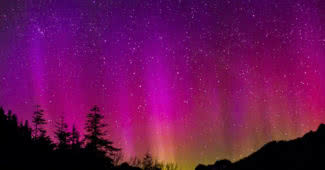There are countless breathtaking sights on Earth that one could never fully explore in a single lifetime. However, the Seven Natural Wonders organization has identified seven awe-inspiring natural wonders that showcase the incredible beauty of our planet. Take a look at these 7 greatest natural wonders on earth and marvel at their splendor.
7Victoria Waterfalls
Visitors can even see it from 50 kilometers away and witness a unique moonbow on a full moon night due to the intense water spray. Despite gaining independence, Zambia did not change the name of Victoria Falls to an African name. It shows their respect for David Livingstone, a Scottish explorer who named this waterfall after Queen Victoria in 1855.
6Paricutin Volcano, Michoacan, Mexico
The Paricutin volcano is a cinder cone volcano located in Mexico that stands at a height of 2800m. Interestingly, the Paricutin volcano grew from a cornfield, and an Indian farmer named Dominic Pulido discovered it during its first eruption in 1943. After a final height of 424 meters above the cornfield, Paricutin went quiet, followed by its last eruption in 1952.
As being a monogenetic volcano, it won’t erupt again. Paricutin showed a relatively short lifespan and rapid growth. So, the volcanologists witnessed its birth, life, and death within a decade, unlike volcanoes that remain active for thousands of years. These combined factors make it one of the greatest natural wonders worth exploring.
Top 7 Best Places To See The Northern Lights
5Harbor of Rio de Janeiro, Brazil
Its mouth, which resembles a river more than a bay, explains why the city got the name Rio de Janeiro, meaning “River of January.” Overlooking the bay is the iconic Christ the Redeemer statue on the Corcovado mountain. To explore the beauty of the Harbor of Rio de Janeiro, you can take a hang-gliding trip off one of the granite monoliths surrounding the harbor.
4Grand Canyon, Arizona, United States
Visitors can witness magnificent pinnacles of stone and rock, displaying a spectrum of colors that change with every passing hour. The Phantom Ranch, situated on the river banks, provides accommodation for overnight stays. Additionally, on the narrow side of the canyons, you can see stunning waterfalls and shimmering pools of turquoise water.
3Aurora Borealis
These northern polar lights often appear as a greenish glow, sometimes even a faint red, consisting of solar wind and charged particles. It usually extends from east to west across the sky. These lights are constantly changing and evolving according to the shape of the earth’s magnetic field.
2Mount Everest
Mount Everest is the highest point on Earth, standing at a staggering height of 8848 meters, situated between the borders of Tibet and Nepal in the Himalayan mountains. Named after George Everest, Mount Everest serves as the Ambassador to the Seven Natural Wonders of Asia. Interestingly, the height of Everest increases by 4 mm each year.
The mountain’s summit consists of ancient limestones around 250 million years old. At its top, the temperature can get as low as -36 degrees Celsius in winter and -19 degrees Celsius in summer. You can experience its scenic beauty through small flights that take you up to the top and circle it, giving an aerial view.
Related Articles
1Great Barrier Reef, Australia
The Great Barrier Reef is the world’s largest and most iconic coral reef structure. It is visible from outer space as the largest single water structure built by living organisms. Located in the Coral Sea off the coast of Queensland, Australia, it spans approximately 344,400 square kilometers with over 2,900 individual reefs.
Composed of billions of tiny coral polyps, it supports a diverse range of life. This reef structure is a popular tourist destination, particularly in the Whitsunday Islands and Cairns regions. It generates over $3 billion annually through tourism. However, human interventions and environmental pressures, such as climate change and coral bleaching, have caused the reef to lose over half its coral cover since 1985.




